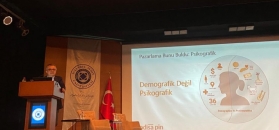Forecasting: Predicting the Future with Historical Data
Data forecasting is a branch of data science and statistics that covers a wide range of techniques aimed at predicting what will happen in the future using historical data. This technique is used across many industries and functions and helps companies plan their next steps, create budgets, and make strategic decisions. Forecasting is used by managers, finance teams, human resources teams and many other functions for various purposes such as financial planning, logistics management, resource allocation and forecasting personnel expenses.
Selection of Prediction Methods
The method to be used in the forecasting process varies depending on the structure of the data to be predicted. If the data contains time variables, time series analysis is preferred. This method tries to predict future values by analyzing the change of data over time. For example, time series analysis can be used to predict future production quantities by analyzing a factory's production data.
If the dependent variable takes a continuous value, regression analysis comes into play. Regression aims to predict future values by modeling the relationship between the dependent variable and one or more independent variables. For example, regression analysis can be used to predict sales in future months by analyzing a company's sales data.
If the dependent variable takes categorical values, classification algorithms are used. Classification attempts to predict future classes by dividing data into specific categories. For example, a human resources department might use classification algorithms to predict the likelihood of employees leaving.
Prediction Applications for Different Project Purposes
Estimation techniques can provide results in different scopes and details depending on the objectives of the project. Below are some examples of how forecasting can be used for different audiences and stakeholders:
Raw Material Stock Management: Calculating the optimum stock level using temporal data on a factory's raw material stocks. This allows the factory to operate without interruption in the production process and minimizes inventory costs.
Machine Maintenance and Malfunction Prediction: Analyzing past performance data of machines on the production line and predicting when these machines may malfunction. In this way, it is possible to increase production efficiency by preventing unexpected stoppages.
Predicting Customer Behavior: Predicting customers' future spending by analyzing past purchasing data. This information can be used to optimize marketing strategies and increase customer loyalty.
Optimum Salary Determination: Determining the most appropriate salary level for employees by analyzing employee performance data and market conditions. This can reduce workforce turnover by increasing employee satisfaction.
Predicting Employee Turnover Rate: Determining which employees are likely to leave by predicting employees' intentions to leave. This information can be used to shape human resources strategies and ensure continuity in critical positions.
In conclusion;
Forecasting has gone beyond being a process based solely on historical data and has become an important part of the strategic decision-making process. Today, businesses can better predict the future by using these techniques and thus gain a competitive advantage. Effectively using forecasting techniques in forward planning and risk management will help businesses achieve success in the long term.
- About Us
-
Solutions
- Solutions
-
Employees and Organization Research
- Employees and Organization Research
- Experience and Development
- Increasing Loyalty and Reputation
- Culture and Organization Development
- Human Resources Analytics
- Tailored Research Design
- Customer and Brand Research
- Competencies
- Reports
- Our Team
- Career
- Contact
Last News
All NewsHüseyin Adanalı attended the Changing People Management Conference at Aydın University.
11 Aralık 2019, Çarşamba



